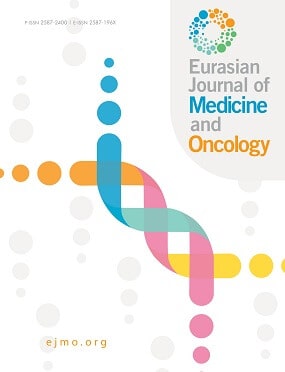

Vaginal Hysterectomy Versus Two-dimensional and Three-Dimensional Total Laparoscopic Hysterectomy in Women With Benign Uterine Diseases
Denizhan Bayramoglu1, Neslihan Bayramoglu Tepe21Department of Obstetrics and Gynecology, Antalya Training and Research Hospital, Antalya, Turkey, 2Department of Obstetrics and Gynecology, Gaziantep University, Gaziantep, Turkey,
Objectives: This study aimed to compare the outcomes of vaginal hysterectomy (VH) and two- and three-dimensional total laparoscopic hysterectomy (2D TLH, 3D TLH) in women with benign uterine diseases. Methods: A retrospective, randomized study was conducted at the Department of Obstetrics and Gynecology, Bagcilar Training and Research Hospital between 2010 and 2012. Overall, 99 women underwent VH, 68 underwent 2D TLH, and 41 underwent 3D TLH. Patients’ ages, parities, uterine weights, pre- and postoperative hemoglobin (Hb) and hematocrit (Htc) values, operating times, complication rates, and hospitalization duration were compared. Results: A statistically significant difference was found among the groups in terms of patients’ ages, parities, uterine weights, operating times, and hospitalization duration (p<0.05). Patients who underwent 3D TLH were younger and had lesser parities, greater uterine weights, and shorter operating times. The hospitalization duration was similar between the 2D and 3D TLH groups (average, 2 days; min, 1 day; and max, 8–10 days); however, it was shorter than the VH group (average, 3 days; min, 3 days; and max, 8 days). No statistically significant difference was observed among the groups in terms of the pre- and postoperative Hb/Htc values and complication rates (p>0.05). Conclusion: VH still remains the preferred procedure for patients with uterine prolapse and patients who require pelvic repair. 3D TLH offers quick operation with less complication rates and morbidity and reduces the hospitalization duration. Because of more favorable outcomes, we presume that 3D TLH may replace 2D TLH in the near future.
Cite This Article
Bayramoglu D, Bayramoglu Tepe N. Vaginal Hysterectomy Versus Two-dimensional and Three-Dimensional Total Laparoscopic Hysterectomy in Women With Benign Uterine Diseases. EJMO. 2017; 1(3): 149-154
Corresponding Author: Neslihan Bayramoglu Tepe



